Disclosure: This article contains affiliate links. We may earn a commission from purchases at no extra cost to you, which helps our travel content.
There's something deeply spiritual about witnessing first light break across the red sandstone arches of Utah's most photographed national park. The way the morning glow transforms ordinary rock into living sculpture speaks to something primordial in us all. It's been three years since my father's passing, and somehow, standing alone with my camera beneath Delicate Arch as the autumn sun painted everything in amber and gold, I felt closer to him than I had in years. This guide shares everything I've learned across multiple visits to help you create your own meaningful connection with this extraordinary landscape—through the lens of your camera.
Planning Your Photographic Pilgrimage
Arches National Park presents a fascinating paradox for photographers. Its most iconic formations are among the most photographed landscapes in America, yet capturing them in a way that feels personal remains entirely possible. The key lies in timing, patience, and a willingness to venture beyond the roadside viewpoints.
Autumn offers the perfect conditions—temperatures hovering between 15-25°C during daylight hours (dropping considerably at night), fewer crowds than summer, and that magical golden light lasting longer as the sun tracks lower across the southern sky. I've found mid-October ideal, when the cottonwoods along nearby waterways add splashes of yellow to complement the red rock.
Before setting out, I strongly recommend downloading the PhotoPills app to your smartphone. This remarkable tool has transformed my landscape photography, allowing me to plan precise sunrise positions and even map Milky Way alignments with specific arches. The augmented reality feature proved invaluable for visualizing how light would interact with formations hours before it actually happened.
Accommodation in Moab books quickly during peak seasons, so secure your lodging well in advance. I've stayed at various places over the years, but found the greatest photographic convenience at hotels on the north end of town, shaving precious minutes off pre-dawn drives to the park entrance.

💡 Pro Tips
- Book accommodations at least 3-4 months in advance for autumn visits
- Purchase your America the Beautiful annual pass online before arrival if planning to visit multiple parks
- Download offline maps and the official NPS app before arrival as cell service is spotty within the park
Essential Gear for Desert Photography
The harsh desert environment of Arches demands specific equipment considerations beyond your standard photography kit. My own gear has evolved considerably since my first visit, when I woefully underestimated both the challenging lighting conditions and the physical demands of the landscape.
A sturdy tripod is non-negotiable for serious landscape work here. After damaging a lightweight carbon fiber model during a particularly gusty evening at Balanced Rock, I invested in the sturdier support system with a ball head that has weathered countless desert excursions without complaint.
Filters become essential tools in this high-contrast environment. I never photograph Arches without my graduated neutral density filters to balance bright skies with shadowed foregrounds. For those magical moments when the sun appears directly in your composition, a variable ND filter allows for creative long exposures even in bright conditions.
Perhaps most crucial is protection for your equipment. The fine, ubiquitous desert sand has an uncanny ability to infiltrate every opening in your camera body. I've found the silicone skin cover provides excellent protection while still allowing easy access to controls. For lens changes (which I minimize in the field), the changing tent has saved me from potential sensor disasters on windy days.
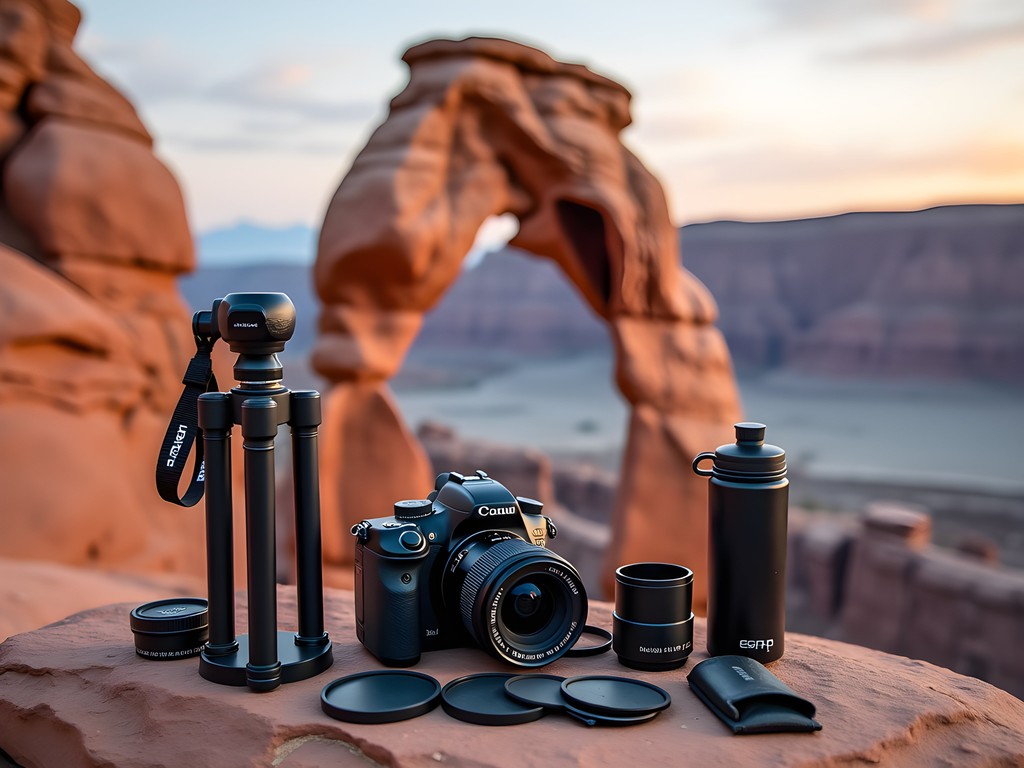
💡 Pro Tips
- Bring twice as many microfiber cleaning cloths as you think you'll need—dust is relentless
- Use a rocket blower before using any lens cloth to prevent scratching your glass with sand particles
- Pack a headlamp with red light mode for pre-dawn hikes to preserve your night vision
Perfect Timing: The Light Hunter's Schedule
The quality of light in Arches National Park transforms dramatically throughout the day, creating distinct photographic opportunities that demand a strategic approach. My most successful visits have followed a carefully orchestrated schedule that maximizes each lighting phase.
Pre-dawn departures are essential for the serious photographer. I set my reliable alarm clock for 90 minutes before official sunrise during each visit, allowing time to drive into the park and hike to my chosen location in darkness. The headlamp with its red-light mode has been invaluable for preserving night vision while navigating trails by starlight.
The morning blue hour—that magical period before the sun crests the horizon—offers perhaps the most ethereal light for photographing the eastern-facing formations. The Windows section becomes otherworldly during these moments, with the pre-dawn glow creating a perfect balance between sky and stone.
Mid-morning brings harsh overhead light that challenges even experienced photographers. This is when I focus on abstract detail work, seeking out patterns in the rock or sheltered locations like Sand Dune Arch where filtered light creates softer conditions.
Late afternoon through sunset provides the classic 'golden hour' that Arches is famous for, with Delicate Arch and the formations along the Windows loop receiving particularly magnificent illumination. I've found positioning myself at chosen locations at least an hour before sunset essential, as the best spots attract photographers and visitors alike.
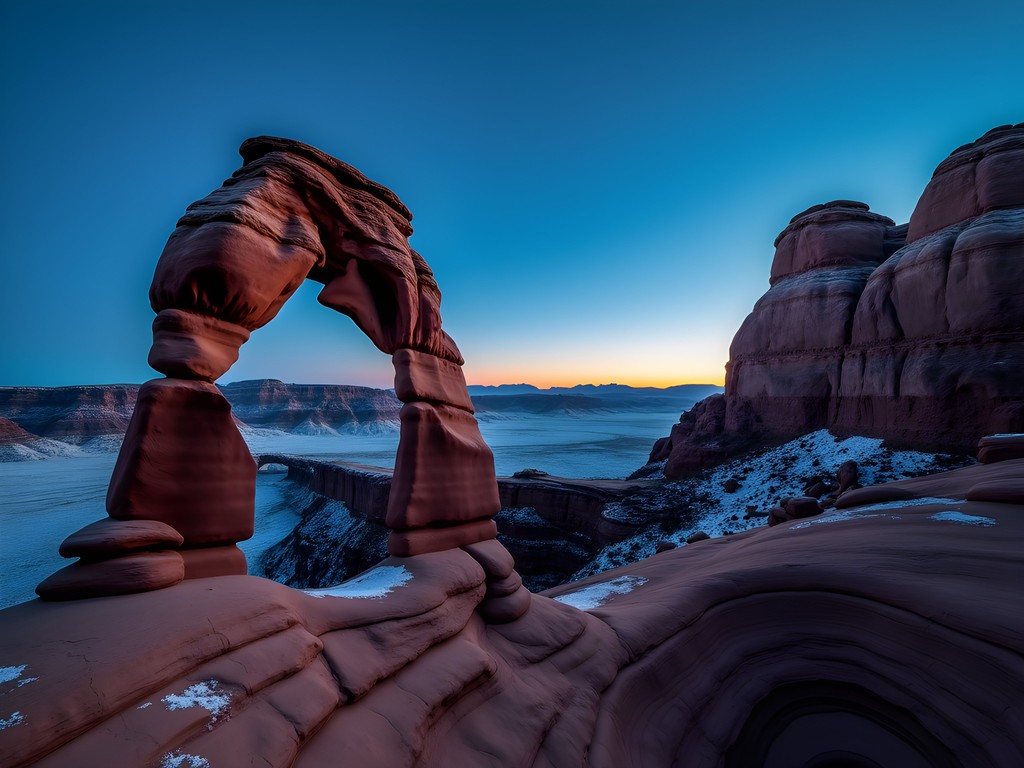
💡 Pro Tips
- Arrive at Delicate Arch at least 90 minutes before sunset to secure a prime photography position
- The 30 minutes after sunset often provides the most balanced light for photographing western-facing formations
- Use the midday harsh light hours to scout locations for sunset and sunrise shoots
Beyond the Postcard Shots: Finding Your Unique Perspective
While iconic formations like Delicate Arch rightfully command attention, some of my most meaningful images from Arches have emerged from less trafficked locations and unconventional perspectives. The park rewards those willing to venture beyond the established viewpoints.
The Fiery Furnace area, accessible only with a permit or ranger-guided tour, offers labyrinthine passages and hidden arches that few visitors photograph. Securing a permit requires advance planning (book through recreation.gov), but the resulting photographic opportunities are unparalleled. The narrow passages create dramatic light shafts during mid-morning that transform ordinary rock walls into abstract canvases of light and shadow.
Even at popular locations, changing your perspective can yield remarkable results. Rather than shooting Delicate Arch from the standard amphitheater viewpoint, I've found that climbing higher along the right side (while remaining on established trails) provides a compelling angle that incorporates the La Sal Mountains as a dramatic backdrop.
Night photography presents perhaps the greatest opportunity for creating unique images. The park's designation as an International Dark Sky Park means the Milky Way arches brilliantly above the sandstone formations from March through October. For these sessions, I rely on my intervalometer to capture multiple long exposures that can be stacked to reduce noise in post-processing.
When conditions align, dramatic weather adds another dimension to your photography. I'll never forget sheltering beneath an overhang near Double Arch as a summer storm rolled through, capturing lightning strikes illuminating rain-slicked formations with my camera secured on a weather-resistant camera cover to protect against the elements.
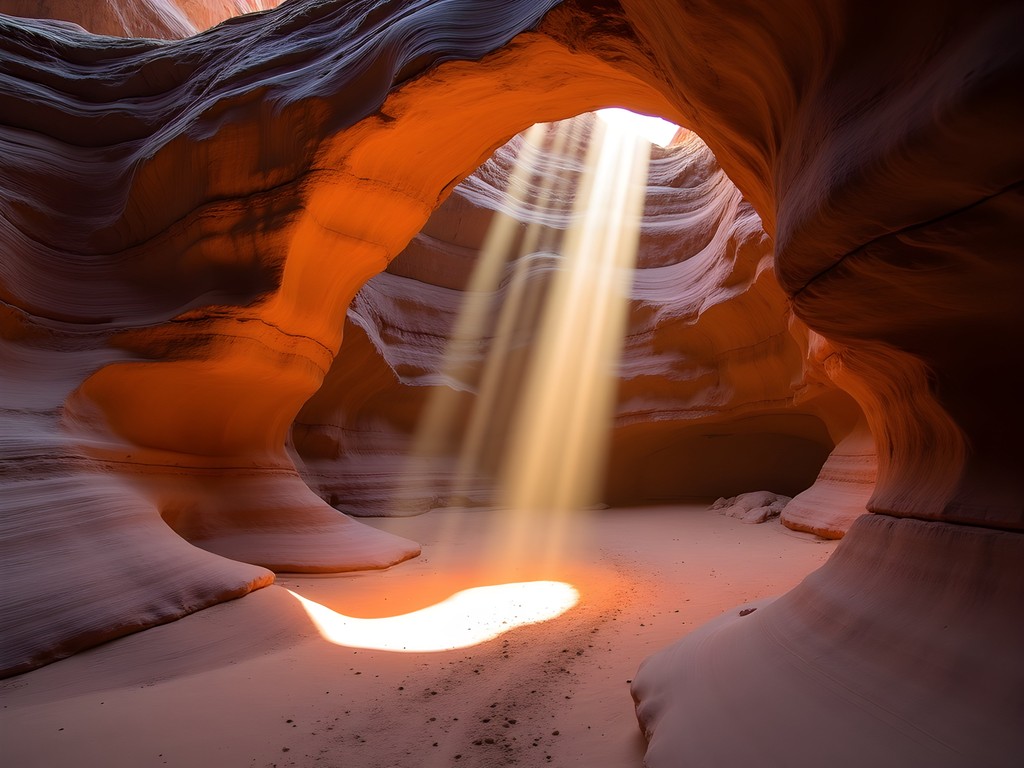
💡 Pro Tips
- Photograph the less-visited Courthouse Towers area at sunrise for dramatic side-lighting
- Use a 24mm or wider lens when shooting inside narrow canyons to capture the full vertical scope
- Try intentional camera movement techniques during blue hour for abstract interpretations of the landscape
Practical Considerations for Desert Photography
The harsh desert environment of Arches demands respect and preparation beyond your photographic concerns. My first visit taught me several hard lessons about desert photography that I've never forgotten.
Hydration becomes critically important, even during cooler autumn days when you might not feel thirsty. I now carry the insulated water bottle on every outing, which keeps water cool throughout the day. For longer hikes to remote formations, I supplement this with a hydration bladder in my photography backpack.
Sun protection is non-negotiable. Beyond standard sunscreen, I've found the sun protection hoodie invaluable for long days in the field, providing UPF 50 protection while remaining cool and comfortable. For your equipment, remember that black camera bags and gear can reach dangerous temperatures in direct sunlight—I learned this after nearly burning my hand on a lens cap left on my pack.
Navigation presents unique challenges in the seemingly featureless landscape. While main trails are well-marked, venturing to more remote photography locations requires preparation. I now carry the handheld GPS as backup to phone apps, particularly valuable when shooting at night when trail markers become difficult to spot.
Finally, respect for the fragile desert environment must guide every step. The biological soil crust that appears as merely dark soil is actually a living ecosystem that takes decades to recover from a single footprint. Stay on established trails and slickrock when composing your shots, even if it means sacrificing that 'perfect' angle.
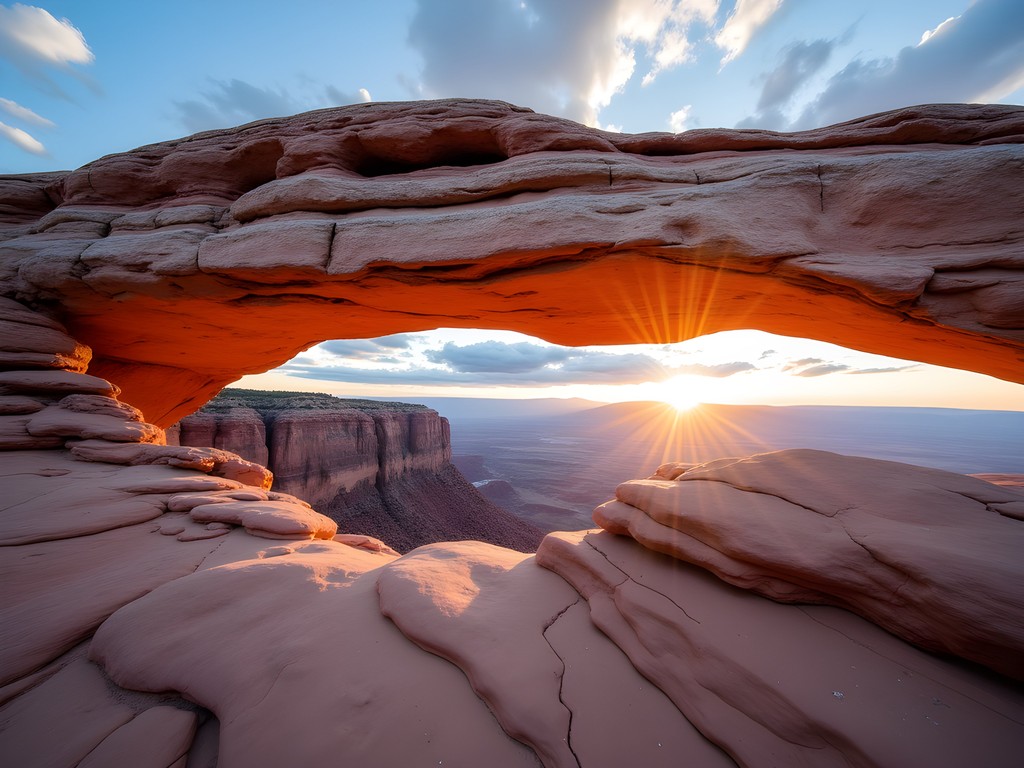
💡 Pro Tips
- Start hydrating the day before your photography outings—once you feel thirsty in the desert, you're already dehydrated
- Use gaffer tape to secure lens caps and small accessories to your gear—they disappear forever in the sandy landscape
- Plan your bathroom breaks strategically as facilities are limited to the visitor center and Devils Garden trailhead
Final Thoughts
As I packed away my gear after that final sunset at Double Arch, watching the sandstone fade from brilliant orange to subtle purple in the gloaming light, I found myself reflecting on why these ancient formations speak so profoundly to us through our viewfinders. Perhaps it's their perfect balance of permanence and fragility—standing for millennia yet constantly changing through erosion's patient hand. Or maybe it's how they frame the sky, creating natural compositions that resonate with something deeply human in all of us.
Photography in Arches isn't merely about capturing pretty pictures of famous landmarks. At its best, it becomes a form of meditation—a practice of seeing deeply, of connecting with landscape across time. My father would have understood this instinctively. He never visited these arches himself, but his appreciation for patient observation in beautiful places is something I carry with me through every national park.
Whether you're visiting for a weekend or a week, I hope this guide helps you create images that go beyond the standard postcard shots to capture something meaningful and personal. The perfect photograph of Arches isn't necessarily the most technically perfect—it's the one that captures your unique relationship with this extraordinary landscape. Pack your gear thoughtfully, rise early, stay out late, and above all, take time between exposures to simply witness the wonder of this place with your own eyes, not just through your viewfinder.
✨ Key Takeaways
- The best photography happens during the golden hours—plan to be at your chosen locations well before sunrise and sunset
- Protective gear for both yourself and your equipment is essential in the harsh desert environment
- Venture beyond the iconic arches to discover unique compositions in less-photographed areas
- Take time between shots to experience the landscape directly—your emotional connection will strengthen your images
📋 Practical Information
Best Time to Visit
Mid-September through early November
Budget Estimate
$150-250 per day including accommodation, park fees, and meals
Recommended Duration
3-4 days minimum for photography
Difficulty Level
Moderate (Some Locations Require Challenging Hikes)

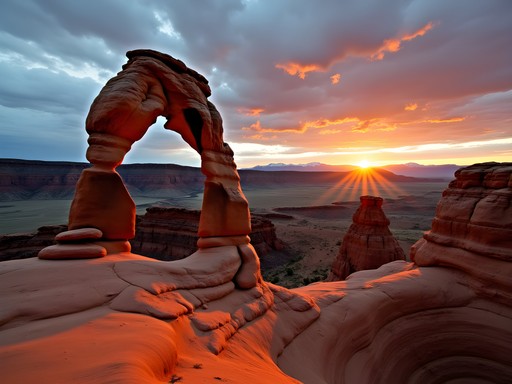













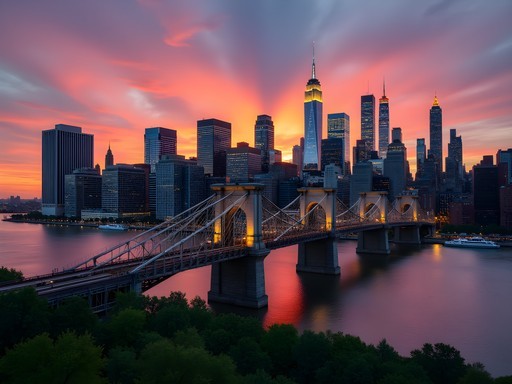
Comments
Sophia Gomez
Edward, your guide couldn't have come at a better time! I'm leading a photography workshop in Moab next month. One tip I'd add for anyone heading there: don't forget to look beyond the arches themselves. Some of my favorite shots from my last visit were actually of the La Sal Mountains framed through the park's features. The contrast between the snow-capped peaks and the red rock is stunning, especially in late afternoon when the mountains catch that golden light. Also, for those struggling with the harsh contrast, bracketing exposures has saved many of my shots!
moonway
Just got back from Arches last week and used many of your tips! The section on dealing with harsh midday light saved my trip. I brought my portable diffuser as you suggested and it made a huge difference for close-up shots of the textures and patterns. One thing I'd add - bring way more water than you think you need. I went through 3 liters on the Devil's Garden trail alone, and that was in early spring! The dry air is no joke.
happystar
So true about the water! I did Devil's Garden last summer and went through 4 liters. The section after Landscape Arch gets intense!
cooldiver
That shot of Delicate Arch at sunset is absolute perfection! What time of year did you visit?
redphotographer7271
Heading to Arches next month for the first time. What lens would you recommend as a must-have if I can only bring two? I shoot on a Sony a7III.
Edward Hill
For Arches, I'd definitely bring a wide angle (16-35mm is perfect) for the dramatic landscapes and a versatile 24-70mm for everything else. If you have room for a third, a telephoto helps isolate details in the rock formations!
redphotographer7271
Perfect, thanks! I have the 16-35 f/4 and the 24-105. Sounds like I'm good to go!
Oliver Duncan
Edward, you've really captured the soul of Arches here. I spent three days there last autumn and found myself constantly battling the crowds at Delicate Arch during golden hour. Your tip about exploring the less-visited arches in the late afternoon is spot on! I stumbled upon Sand Dune Arch around 4pm and had it completely to myself for almost an hour. The way the light filters through the fins creates this ethereal glow that's almost impossible to describe. Did you have any luck with night photography while you were there?
Edward Hill
Thanks Oliver! Yes, I spent two nights shooting the Milky Way over Landscape Arch. The park's Dark Sky designation is no joke - some of the clearest night skies I've ever worked with. Sand Dune Arch is such an underrated gem!
Oliver Duncan
Landscape Arch at night is on my bucket list for next time! Did you have any issues with the cold? I found my battery life really suffered after sunset.
Edward Hill
Absolutely - desert nights are brutal on gear. I kept spare batteries in an insulated pouch close to my body. Makes a huge difference!
beachway8303
These photos are INCREDIBLE! Makes me want to book a trip to Moab right now!
escapeninja
Great guide, Edward! After 5 visits to Arches, I've learned that patience is everything. Last trip I spent 3 hours at Double Arch waiting for the perfect light and fighting off the urge to leave when tour buses arrived. The crowds eventually cleared, clouds parted, and I got the shot of a lifetime. One tip I'd add: don't forget to look DOWN. The patterns in the desert varnish and the textures of the sandstone make for incredible macro opportunities that most photographers rushing between arches completely miss. Also, for anyone serious about night photography there, a good headlamp with a red light mode is essential for navigating back to your car without ruining your night vision.
Savannah Torres
Edward, your guide brought back so many memories! We took our kids (7 and 9) to Arches last spring, and while I was busy making sure they didn't climb on everything in sight, I still managed to capture some decent shots. Your tip about seeking out the less photographed arches was spot on - Sand Dune Arch became our secret spot. The kids loved playing in the sand while I experimented with framing shots through the narrow canyon walls. The soft, diffused light there was forgiving even during midday when we needed to escape the heat. For families reading this - bring PLENTY of water and snacks if you want happy little hikers who'll pose patiently while you set up that perfect shot!
freeadventurer
Sand Dune Arch is totally underrated! Did you make it to Broken Arch too? It's connected by the same trail and hardly anyone goes there.
Savannah Torres
@freeadventurer Yes! We did the loop to Broken Arch and had it all to ourselves for about 20 minutes. My daughter called it the 'secret arch' and it became her favorite spot in the park!
greenlife
Just got back from Arches last week! Wish I'd seen this guide before going - those lighting tips would've been so helpful!
wanderlustwalker
These photos are INSANE! Especially love that shot with the storm brewing in the background!
Venture X
Premium card with 2X miles, $300 travel credit, Priority Pass